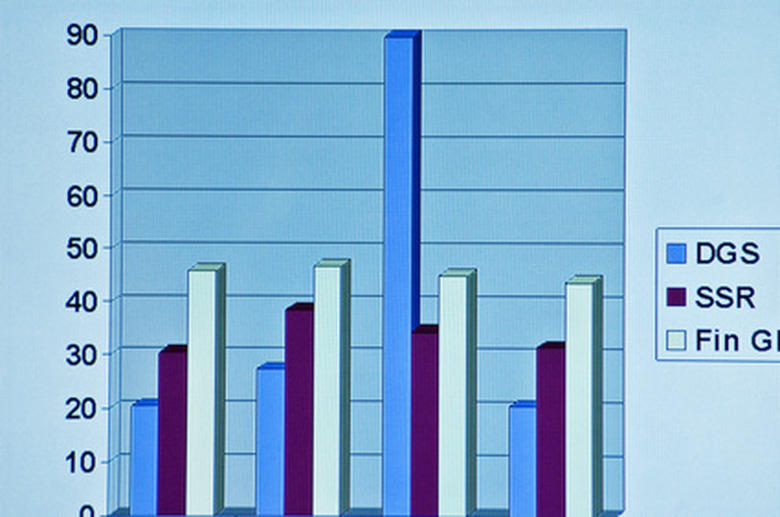What Are The Different Types Of Correlations?
Different kinds of correlations are used in statistics to measure the ways variables relate to one another. For example, by using two variables — high school class rank and college GPA — an observer may draw a correlation that students with an above average high school rank typically achieve an above average college GPA. Correlations also measure the strength of the relationship and whether the correlation between variables is positive or negative. The type of correlation performed depends on whether the variables are non-numeric or interval data, such as temperature.
Pearson Product Moment Correlation
Pearson Product Moment Correlation
The Pearson Product Moment Correlation was named after Karl Pearson, founder of the mathematical statistics discipline. It's considered a simple linear correlation, meaning that the relationship between two variables depends on them being constant. Pearson is used with interval data to measure the strength of a correlation, which is represented by the letter r in the equation. This correlation also shows whether the relationship is positive or negative; represented by numbers valued between +1 and -1. The closer the value of r comes to -1.00 or +1.00, the stronger the correlation. The closer the value of r comes to the number 0, the weaker the correlation. For example, if r equaled -.90 or .90 it would indicate a stronger relationship than -.09 or .09.
Spearman's Rank Correlation
Spearman's Rank Correlation
The Spearman's Rank Correlation was named after statistician Charles Edward Spearman. Spearman's equation is simpler and often used in statistics in place of Pearson, although it's less conclusive. Social scientists may also use Spearman's to describe the correlation between qualitative data, such as ethnicity or gender, and quantitative data, such as the number of crimes committed. The correlation is calculated using a null hypothesis that is subsequently accepted or rejected. A null hypothesis normally consists of a question to be answered; for example, whether or not the numbers of crimes committed are the same for males and females.
Kendall Rank Correlation
Kendall Rank Correlation
The Kendall Rank Correlation, named for British statistician Maurice Kendall, measures the strength of dependence between the sets of two random variables. Kendall can be used for further statistical analysis when a Spearman's Correlation rejects the null hypothesis. It attains a correlation when one variable's value decreases and the other variable's value increases; this correlation is referred to as discordant pairs. A correlation can also occur when both variables increase simultaneously, referred to as a concordant pair.
References
- "Statistics For People Who (Think They) Hate Statistics"; Neil J. Salkind; 2003
- "Statistics"; Robert S. Witte, John S. Witte; 2000
- "Elementary Statistics in Social Research"; Jack E. Levin, James Alan Fox; 2004
- Research Methods Knowledge Base: Correlation
Cite This Article
MLA
Kerley, Christa. "What Are The Different Types Of Correlations?" sciencing.com, https://www.sciencing.com/different-types-correlations-6979655/. 24 April 2017.
APA
Kerley, Christa. (2017, April 24). What Are The Different Types Of Correlations?. sciencing.com. Retrieved from https://www.sciencing.com/different-types-correlations-6979655/
Chicago
Kerley, Christa. What Are The Different Types Of Correlations? last modified March 24, 2022. https://www.sciencing.com/different-types-correlations-6979655/
